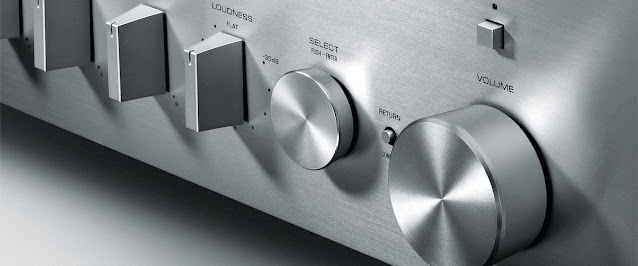The Ultimate Integrate Part 4.
I like the Nordic "funkis" way of designing things. I won't call it minimalism because its more like make it decluttered yet functional. A DSP like ADAU1701 and a development tool like SigmaStudio opens up for endless options and my major problem is to pick and choose wisely. Not what can I have but what do I really need? I initially opted for mono, loudness and headphone cross-feed apart from PEQ on both speakers and headphones.
A switch for the mono function is obvious but the need for a loudness switch was not as obvious. Not after playing around with the Loudness (Low and High) External Control under ADI Algorithms in the SigmaStudio Toolbox. I made some bench tests where I toggled between the standard Single Slew Ext Vol control and the Loudness (Low and High) External Control and they both work great as a multi channel volume control. The loudness control got a contour that varies with the attention where the volume control got no contour. My first thought was to add a toggle switch where I could switch between these two but another option would be to use the loudness control as the volume control. My only worry was that the contour might affect the sound too much so I had to make some measurements before making a decision.
I used REW on a laptop and a Steinberg UR22 Mk2 audio interface to make these measurements. The audio interface output was connected to the DSP input and the DSP output was connected to the audio interface line level input. I used single ended output from the DSP. I then measured aproximatly 2.5 dB gain through the DSP with a straight connection between input and output in SigmaStudio (e3 Audio states aproximatly 10 dB gain for the differential output). I also measured 1.12 Vrms on the input just before reaching 0 dB in SigmaStudio. That would equal 1.5 Vrms on the single ended output for a 2.5 dB gain.
This is a first rough measurement on the workbench. Don't pay too much attention to the dBFS scale because I did not pay attention to levels just that I had enough headroom. I wanted to compare the frequency response for the volume vs. the loudness control. The graph compares the responses for 100%, 75%, 50% and 25% on the volume potentiometer hooked up as GPIO input through one of the aux ADC on the DSP board.
The response is the same at 100% with the loudness contour gradually increasing as attenuation increase. I measured the attenuation to be -2.5 dB @ 75%, -6 dB @ 50% and -12 dB @ 25% for the software volume control. It bottoms out somewhere around -57 dB.
The contour of the loudness control is with the default values and it is not that extreme with less than a 1 dB lift @ 75% and around 1.5 dB @ 50%. The impact will be very dependant on the input level and input parameters to the ADI loudness algorithm. I think I could live with the loudness control as the permanent volume control as long as normal listening levels can be kept above 50% on the control pin (by the input potentiometer).
The documentation for the ADI loudness algorithm is pretty lacking and the GUI controls for LP and HP settings are pretty useless (OMG, why can't I just enter the value?). I therefor made some additional measurements just to figure out how these knobs affects the response. These curves looks quite extreme but pay attention to the dBFS scale. Its only around 3.5 dB difference between the highest and the lowest values.
One of these four curves represents the default values of the loudness block. The other three min, max and middle position of the LF and HF knob. I also named the curves after the resulting parameter values in the DSP registers (min = 0.5/0.5, max = 2.5/2.5, middle = 1.5/1.5 and default = 1.22/0.58). These values can be used to control the level of loudness applied over the range of attenuation.
I wish there where a threshold parameter where you could decide where the algorithm should kick-in and not tie it to 0 dB. Anyway I guess this makes the loudness control a viable alternative to the volume control and it voids the need for a dedicated loudness switch on my front panel. I decided to use that switch as a "Direct" switch instead. It will bypass the DSP filters and replace the loudness control with a normal volume control. I think it will be more "funkis" for daily use and a direct switch might be very useful at times, like comparing and measure speakers without having the PEQ and other filters affecting the measurements.








